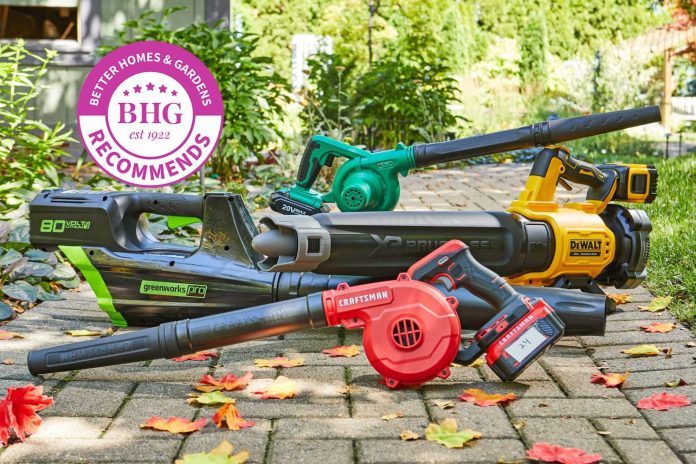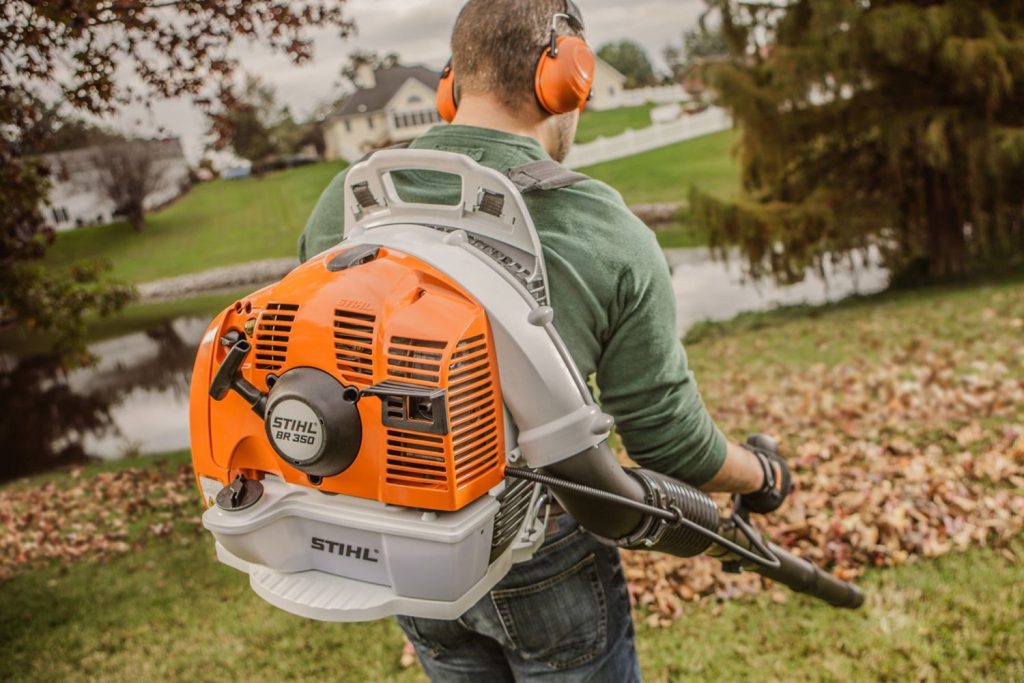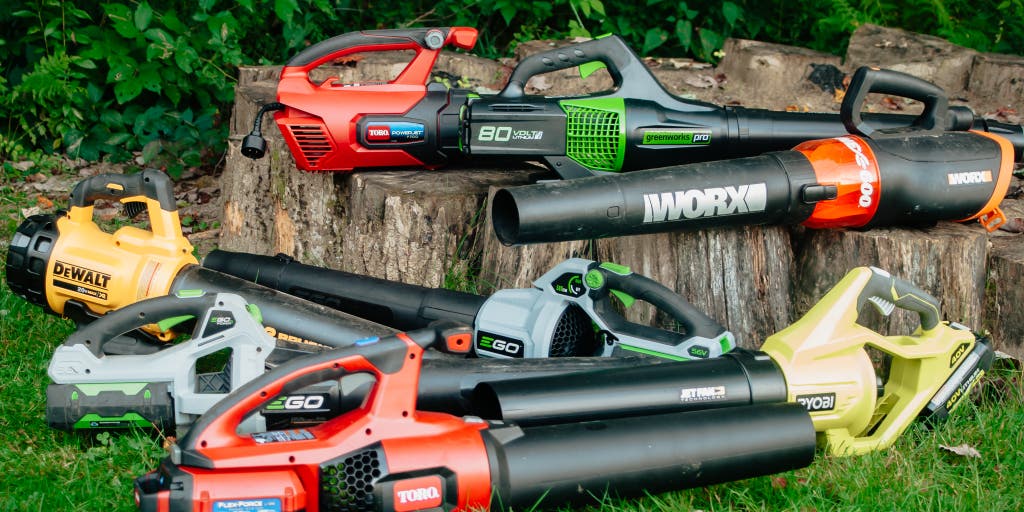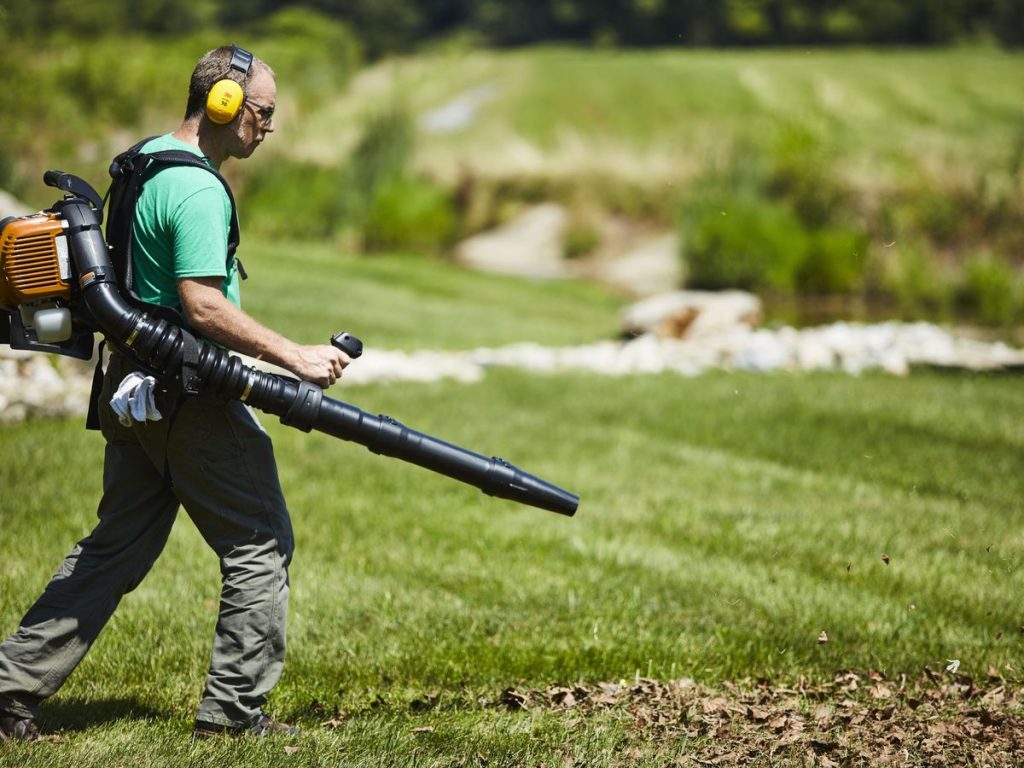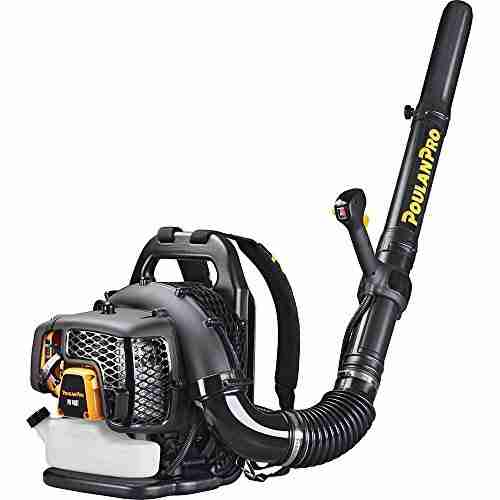Have you ever wondered what fuels the immense power behind most leaf blowers?
In this article, we will unveil the secret behind their forceful gusts of air that effortlessly clear away leaves and debris.
Prepare to be amazed as we explore the power source that drives these handy yard tools to keep your outdoor spaces tidy and pristine.
1. Electric-powered Leaf Blowers
Electric-powered leaf blowers are a popular choice for homeowners and professionals alike due to their convenience and ease of use. These leaf blowers are powered by electricity, eliminating the need for fuel and reducing both noise and emissions.
1.1 Corded Electric Leaf Blowers
Corded electric leaf blowers are powered by electricity sourced from an outlet. They come with a cord that needs to be plugged into a power source to operate. These leaf blowers provide a consistent and reliable power supply, making them ideal for small to medium-sized yards. They are lightweight and easy to maneuver, providing an effortless cleaning experience.
One of the main advantages of corded electric leaf blowers is their unlimited runtime. Since they are continuously connected to a power source, there is no need to worry about running out of battery or refueling. This makes them particularly suitable for extended use or more significant areas requiring longer runtime.
However, the downside of corded electric leaf blowers is their limited mobility. The cord restricts the range of movement, requiring the user to stay close to an electrical outlet. Additionally, the cord can sometimes get tangled or be inconvenient when navigating around yard obstacles.
1.2 Battery-powered Leaf Blowers
Battery-powered leaf blowers offer the same convenience as corded electric models but with enhanced mobility. These leaf blowers are powered by rechargeable batteries, allowing users to move freely without needing a constant connection to a power source. They are lightweight and portable, making them suitable for various cleaning tasks.
The main advantage of battery-powered leaf blowers is their increased flexibility. Without the limitation of a cord, users can easily maneuver around the yard, reaching tight spaces or areas far away from an electrical outlet. This makes them perfect for larger yards or jobs that require extended mobility.
Another advantage is the reduced noise level compared to gas-powered blowers. Battery-powered leaf blowers operate quietly, minimizing disruptions and providing a more peaceful environment. They are also more environmentally friendly, producing zero emissions during use.
However, battery life limits the runtime of battery-powered leaf blowers. The runtime can range from 20 minutes to an hour or more depending on the model and battery capacity. This means that for larger yards or prolonged use, it may be necessary to have spare batteries or take breaks for recharging.
2. Gas-powered Leaf Blowers
Due to their powerful performance, gas-powered leaf blowers have long been a popular choice for heavy-duty yard work. These leaf blowers are fueled by gasoline and offer increased blowing force, making them suitable for tackling thick layers of leaves or debris.
2.1 Two-Stroke Gas Leaf Blowers
Two-stroke gas leaf blowers are known for their high power output, making them ideal for professional use or heavy-duty tasks. These blowers operate on a mixture of gasoline and oil, generating a powerful blast of air that can quickly and efficiently clear large areas.
One of the main advantages of two-stroke gas leaf blowers is their exceptional blowing force. They can easily handle wet leaves, stubborn debris, or heavier workloads that may be challenging for electric alternatives. Their performance is unmatched, providing a swift and effective cleaning experience.
However, two-stroke gas leaf blowers tend to be louder and emit more exhaust fumes than electric models. This can be a nuisance for the operator and those in the surrounding area. Their fuel requirements and emissions make them less environmentally friendly than electric-powered options.
2.2 Four-Stroke Gas Leaf Blowers
Four-stroke gas leaf blowers offer a more refined and efficient alternative to their two-stroke counterparts. These blowers operate on a separate fuel tank for gasoline and do not require a mixture of fuel and oil. They provide a quieter and smoother operation, with reduced vibrations and exhaust emissions.
The main advantage of four-stroke gas leaf blowers is their improved fuel efficiency. They typically consume less fuel than two-stroke models, resulting in longer runtime and reduced overall costs. Their quieter operation also makes them more comfortable to use for extended periods.
However, four-stroke gas leaf blowers are heavier and bulkier than electric or two-stroke alternatives. This can make them more challenging to maneuver, especially for individuals with limited physical strength or mobility. Additionally, they may require more maintenance due to their complex internal mechanism.
3. Air Compression Leaf Blowers
Air compression leaf blowers utilize compressed air to generate blowing force, offering a unique alternative to conventional power sources. These blowers are versatile and can be powered by different means, providing flexibility in their operation.
3.1 Pneumatic Leaf Blowers
Pneumatic leaf blowers are powered by compressed air, typically supplied by an external air compressor. They are lightweight and easy to handle, allowing users to clear leaves, debris, or dust effortlessly. These blowers are often used in industrial or commercial settings requiring continuous and powerful airflow.
One of the advantages of pneumatic leaf blowers is their unlimited runtime. As long as the air compressor is functioning, the blower can operate continuously without refueling or recharging. This makes them suitable for prolonged use or demanding tasks requiring constant air supply.
However, the main drawback of pneumatic leaf blowers is their dependency on an external air compressor. This limits their portability and requires access to a compressor, which may not be readily available for residential use. Additionally, the compressor’s noise can be a factor to consider, especially in noise-sensitive environments.
3.2 Hybrid Air Compression Leaf Blowers
Hybrid air compression leaf blowers combine the benefits of air compression technology with other power sources. These blowers can be powered by gasoline, electricity, or a combination, providing increased versatility and convenience.
The advantage of hybrid air compression leaf blowers is their flexibility in power options. Depending on the user’s preference or task at hand, they can operate solely on compressed air, gasoline, or electricity. This allows users to adapt the blower’s power source to suit various scenarios or locations.
However, the availability of hybrid air compression leaf blowers may be limited compared to other types. They are still less common in the market but offer a promising alternative for those seeking a versatile and adaptable leaf blower.
4. Hand-powered Leaf Blowers
Hand-powered leaf blowers provide a manual approach to leaf blowing without any external power sources. These blowers rely on human effort to generate blowing force, offering an eco-friendly and cost-effective option for smaller areas.
4.1 Manual Hand-powered Leaf Blowers
Manual hand-powered leaf blowers are simple tools that operate by hand-cranking or manually pushing air through a nozzle. They are lightweight and easy to use, making them suitable for small gardens, patios, or areas where electricity or fuel-powered options may be impractical.
One of the main advantages of manual hand-powered leaf blowers is their quiet operation. Since they do not rely on mechanical or electrical components, they produce minimal noise, creating a more peaceful and enjoyable leaf-blowing experience.
Manual hand-powered leaf blowers are environmentally friendly, as they do not emit exhaust fumes or generate noise pollution. They are also cost-effective, as they do not require fuel or electricity.
However, manual hand-powered leaf blowers may not provide the same blowing force as their power-driven counterparts. They are generally best suited for lightweight tasks or small areas where a gentle breeze is sufficient to move leaves or debris.
4.2 Battery-assisted Hand-powered Leaf Blowers
Battery-assisted hand-powered leaf blowers combine the convenience of battery power with the manual operation of hand-cranking or air-pushing. These blowers feature a built-in rechargeable battery that assists in generating blowing force, enhancing the effectiveness of manual operation.
The advantage of battery-assisted hand-powered leaf blowers is the additional boost provided by the battery. This allows for a more efficient and powerful blowing force than manual options. It can save time and effort, especially when dealing with thicker layers of leaves or harder-to-move debris.
Furthermore, battery-assisted hand-powered leaf blowers maintain the same eco-friendly and cost-effective benefits as manual options. The rechargeable battery ensures a longer runtime without external power sources, making them suitable for small to medium-sized areas or quick cleanup tasks.
However, the battery life of these blowers may still be limited, requiring occasional recharging. The runtime can vary depending on the battery capacity, so it is essential to consider the intended usage and plan accordingly.
5. Solar-powered Leaf Blowers
Solar-powered leaf blowers utilize the energy from the sun to generate power, offering a sustainable and environmentally friendly option for leaf blowing. These blowers harness solar energy through photovoltaic (PV) panels or combine solar power with other energy sources for enhanced functionality.
5.1 Photovoltaic (PV) Solar Leaf Blowers
Photovoltaic (PV) solar leaf blowers rely solely on solar energy captured through integrated solar panels. These blowers convert sunlight into electricity, powering the fan or motor that generates the blowing force. They are wireless and operate silently, providing an eco-friendly and ergonomic solution.
The main advantage of PV solar leaf blowers is their sustainable energy source. They do not require fuel, battery recharging, or access to an electrical outlet, making them highly convenient and cost-effective in the long run. They also produce zero emissions or noise pollution during operation.
However, the effectiveness of PV solar leaf blowers heavily depends on the availability of sunlight. Cloudy or shaded conditions may reduce the power output, affecting the blowing force. Therefore, assessing the local weather patterns and sunlight exposure is crucial before relying solely on solar-powered options.
5.2 Solar-assisted Electric Leaf Blowers
Solar-assisted electric leaf blowers combine solar power’s benefits with electricity’s reliability. These blowers feature integrated solar panels that assist in recharging the built-in battery, ensuring a longer runtime and reduced reliance on external power sources.
The advantage of solar-assisted electric leaf blowers is their enhanced flexibility. They can store solar energy for later use, providing extended runtime even in shaded or low sunlight conditions. This makes them suitable for various environments and situations, offering a reliable leaf-blowing solution.
Additionally, solar-assisted electric leaf blowers maintain the quiet and eco-friendly operation of their purely electric or solar counterparts. They provide a clean and efficient leaf-blowing experience without the need for fuel or the emissions associated with gas-powered models.
However, as with any solar-powered device, the power output may vary depending on the availability of sunlight. It is essential to consider the average sunlight exposure in the area and the specific battery capacity to ensure optimal performance.
In conclusion, leaf blowers come in various power sources and types, each offering different advantages and considerations. Electric-powered leaf blowers, whether corded or battery-powered, provide convenience, reduced emissions, and ease of use. Gas-powered leaf blowers offer powerful blowing force for heavy-duty tasks but come with increased noise and emissions.
Air compression leaf blowers harness compressed air for versatile operation, while hand-powered leaf blowers offer an eco-friendly and cost-effective option for smaller areas.
Solar-powered leaf blowers, relying on solar energy, provide sustainable and environmentally friendly alternatives. Understanding the different power sources and types of leaf blowers allows users to choose the most suitable option for their specific needs and preferences. Whichever type is chosen, efficient and effective leaf blowing is within reach.

